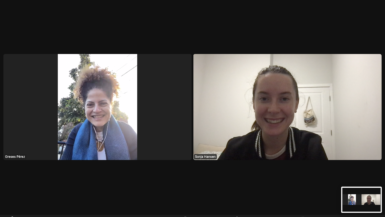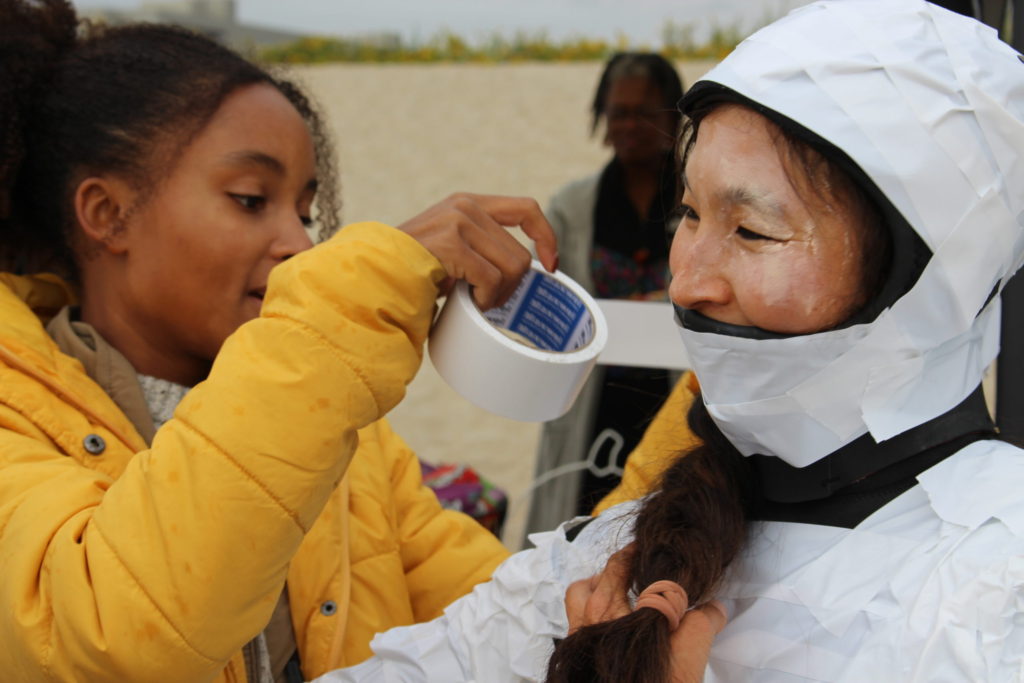
Webinar: Indigenous Peoples’ Rights: The Missing Link in the EU Transition Minerals Legislation
Yesterday, I attended an event organized by The Securing Indigenous Rights in the Green Economy Coalition (SIRGE), the European Raw Materials Coalition (RMC), and the Forest Peoples Programme. It was so rich with information, I wanted to share some of it here. Please check out the recording here for more commentary from the excellent speakers.
The Problem
Environmental justice (EJ) movements and the needs of the green economy have at times been positioned as opposing forces. Most visions of a green economy to bring carbon emissions to net zero require building retrofits, sustainable technology and improved infrastructure, especially around public transportation. All of those projects necessitate more minerals and raw materials, like nickel and lithium. Some say that the way to access such materials is to increase mining operations. In the name of increased demand, mining companies have infringed upon indigenous rights and sovereignty, leading to human rights abuse and destruction of natural resources.
The Transition Mineral Tracker from the Business & Human Rights Resource Centre focuses on six key minerals, monitors 172 mines and tracks human rights abuses in terms of security, government transparency and Covid-19 among other categories. They have collected over 500 cases from 2010–2022. Two-thirds of allegations pertain to the abuse of local communities. This is only the “tip of the iceberg” according to researcher Caroline Avan because her organization relies on public data sources.
In other words, the demand for a green economy has seemingly created more environmental injustice. If the green economy requires harm and the perpetuation of injustice, aren’t we just kicking the can down the road?
Yesterday’s webinar reminded me that there are always alternatives to steamrolling. When policymakers and private interests work from a place of EJ, benefits abound on both sides.
Community opposition begins when corporations refuse to recognize their rights to control development. And in the last 20–30 years, O’Faircheallaigh said, indigenous peoples have massively increased their capacity to delay or stop mining projects through litigation and direct action. Meaning, if corporations don’t take their rights seriously, their ability to deliver supplies in a timely, reliable manner will be impacted.
O’Faircheallaigh described the closure of the Pascua Lama mine in Chile. People who were tortured and killed in their resistance, but they still stopped the project. Developers eventually walked away from their USD$5.1 billion investment because political lobbying, national and international litigation and direct action finally led them to understand that their mining project cannot and should not proceed.
There is real cost to businesses when they don’t work to gain social license to operate (SLTO), defined as the perception from local stakeholders that a project is legitimate and socially acceptable. Social license is the largest risk to mining projects, Kate Finn, Executive Director of First Peoples Worldwide, said. She pointed out that when Energy Transfers Company failed to attain SLTO for the Dakota Access Pipeline, their costs doubled from $3.4 billion to $7.5 billion and its stock declined by 20%.
On the flip side, when indigenous peoples are consulted fairly and choose to give consent, they can get equity shares and co-manage projects, which can help them secure financial benefits.
And it’s not a pipe dream! Equitable deals are happening in Canada and Australia. Indigenous peoples are leading these projects and refusing consent when they need to without seeing a decline in mineral production. Aboriginal people have used their veto to close certain areas to miners. And once these conditions are abided by, mining projects have proceeded, O’Faircheallaigh said.
And aboriginal groups have used revenue from mining to create ranger programs to deal with invasive species and reintroduce traditional burning methods to minimize the impact of fires along with the amount of carbon released.
Recognition of indigenous rights can prevent catastrophic events that endanger cultural heritage. For instance, a 46,000-year-old sacred site was destroyed in an Australian mining operation—a loss not only for indigenous heritage but the world’s.
SIRGE facilitator Yblin Román Escobar said that they’re not looking to “demonize mining, but they need to look at the facts.”
Demands:
For the last two years SIRGE has advocated for a human rights and EJ focus in the EU, Executive Director Galina Angarova said. The EU is one of the largest consumer markets in the world. And with some promising legislation on the table, they have opportunity to avoid mistakes of the past.
Tabea Willi, Coordinator at the Society for Threatened Peoples, provided an overview of EU legislation relating to the Green Transition and how acts like the CSDDD need to be strengthened by including protections for indigenous rights. She mentioned that language, including clauses to “facilitate public acceptance” and “override public opinion,” must be removed.
Here are a handful of other factors that need to be addressed:
- Move mining corporations from voluntary audits to legal accountability and responsibility in international law.
- Free, prior and informed consent (FPIC) at all stages of projects. Finn described this concept as “an equitable way to bring indigenous groups into the decision-making process, to understand what their priorities are, to understand their negotiating powers.”
- Open consultation. They need to be seen as full actors in the projects. Finn said, “It’s not a single moment of contact. Consultation is a process over the course of an entire project that can include design and development”
- Question the need and suitability of increased mining. And opt for demand reduction and circular, regenerative practices through effective recycling and reuse programs.
- Reformation of old mining laws that have not adapted to recognize the technological innovation from the last 150 years.
My Thoughts
A year and a half ago while interning for Greenaction for Health and Environmental Justice, I researched lithium mining as it pertains to environmental justice. The scope of my work was largely concentrated on the southwestern United States and concluded with a set of recommendations for Greenaction to consider as it advises its partner communities when a mining project approaches them or encroaches upon their rights.
The issue of mining for a green economy now feels much more simple as the speakers broke it down. What we need is, at a minimum, to respect indigenous rights to control development on their land. It’s not as convoluted as these corporations might make it out to be! On a basic level, it’s about bringing indigenous people into the conversations that concern their land. It’s a no-brainer.
And, I get it. I know that decision-making processes that respect the well-being and rights of all stakeholders can be time-consuming. But aren’t we trying to model and build a world that does just that? The alternative is even longer delays, greater costs (that will be heaped onto the average person) and less certainty that mining companies will even be able to reliably provide materials.
Does this do away with the need for accountability and reparations for past injustices? Not at all. We still have work ahead. But this webinar left me feeling more hopeful and served as a reminder of the formidable power held by movements led by and for the people.
I’ll also note that this event was a great example of combining the local with the global. Speakers came from all around the world. For some of us, it was 5 a.m. For others it was 10 p.m. We need to collaborate across borders and work in solidarity with international movements.
Speakers:
I am so grateful for these activists and the many others not featured in this webinar. I would like to recognize the labor that such experts have poured into this movement. I encourage that you watch the entire broadcast here.
● Galina Angarova (Buryat), Executive Director, Cultural Survival/SIRGE Coalition
● Ciaran O’Faircheallaigh, Professor of Politics and Public Policy at Griffith University, Brisbane
● Caroline Avan, Senior Natural Resources and Just Transition Researcher, Business & Human Rights Resource Centre
● Tabea Willi, Coordinator Arctic Campaign, Society for Threatened Peoples, Switzerland
● Kate Finn (Osage), Executive Director, First Peoples Worldwide/ SIRGE Coalition
● Arne Muller, Senior journalist, author and researcher, Sweden
● Edson Krenak (Krenak), Indigenous activist and Researcher, Cultural Survival
● Robin Roles, Coordinator Raw Materials Coalition
Additional Resources:
FPIC Guide from SIRGE
Indigenous Peoples and Mining by Ciaran O’Faircheallaigh
Open Letter drafted by indigenous communities to the EU policymakers
Please share other resources below in the comments!





Leave a reply